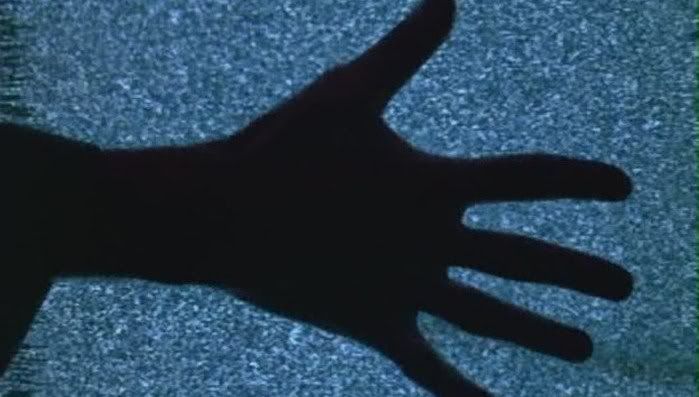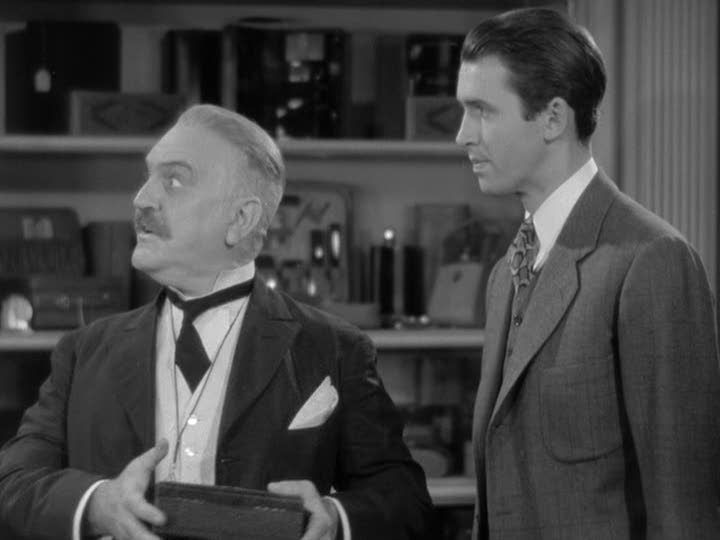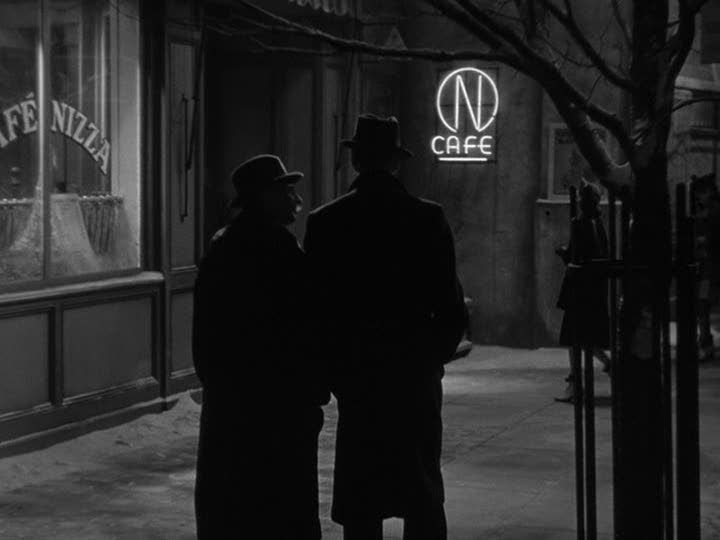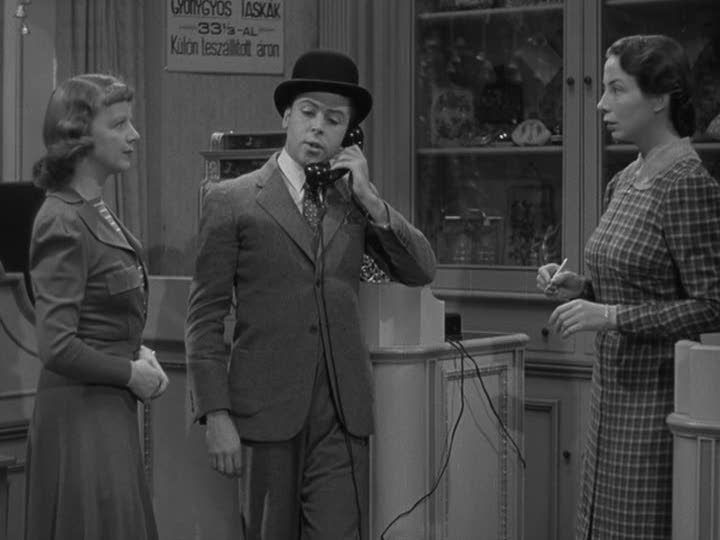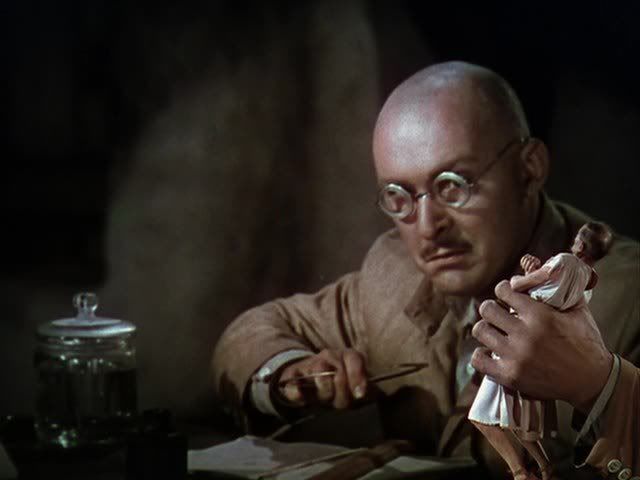
Charles Chaplin resisted the coming of sound more successfully than any other filmmaker of the silent era, making a pair of mostly silent masterpieces after the rest of Hollywood had completely converted to sound. The Great Dictator was his first true sound picture, but even more more notably, it was the first American film to so directly mock and satirize Hitler and the Nazi regime before Pearl Harbor triggered the USA's entrance into World War II. It's a bold and daring film, an expression of defiance against dictatorship, hatred, violence and prejudice. The full extent of what was going on in German concentration camps and ghettos wasn't yet broadly known, at least when production on the film started in 1937, so some of Chaplin's comic set pieces are simultaneously unsettling and eerily prescient, dealing candidly and potently with the persecution of the Jews.
It's a viciously funny movie, a devastating satire that dares to make evil look ridiculous. Chaplin plays twin roles: the nasty and stupid dictator Adenoid Hynkel and an unnamed Jewish barber who seems like a last echo of the Little Tramp character who Chaplin had officially retired with the end of the silent era. While Hynkel, an egoist for whom power is the only goal, spreads war and persecution, the barber just wants to be left alone, to be free to live in peace and run his shop. Wounded in the first war and left in a coma, he slept through Hynkel's rise to power and wakes up as stormtroopers charge through the ghettos, painting the tag "Jew" on Jewish shops and homes, beating people and stealing from them.
The barber doesn't understand, and this is the most richly, deeply sad part of the film, this encounter between the innocence of the barber, this cinematic descendant of the Little Tramp, and the vile hatred of the Nazis. Chaplin's barber confronts the ideology of hate with genuine bafflement, confused as to why these people he's never seen before are harassing him in this way for no reason. He even mistakes a Nazi soldier for a cop, asking him to arrest another soldier. As the barber, Chaplin's voice is soft and whispery, an expression of gentleness and decency, the exact opposite of the blustery speechifying of Hynkel and the barked orders of the Nazis as they attack the Jews. The barber and the other Jews depicted in the film seem totally out of step with the rage and bile of the era; they just want to be left alone, to live their lives in peace.

The barber's disconnection from his era is epitomized right from the beginning of the film, in which he serves as a soldier during World War I. The opening scenes provide a general satire of warfare and military discipline, with Chaplin's hapless draftee stumbling through the fog of the battlefield, stoically following orders as they push him from one absurd scenario to another. Smoke drifts across the frame, swallowing up all the soldiers on both sides so thoroughly that at one point Chaplin falls in line with the enemy troops. This all plays out in an eerie hush that recalls the silent visual aesthetics of Chaplin's earlier films, a style he had by no means abandoned with his delayed acceptance of the sound era. The minimalism and starkness of this opening enforces the film's theme, highlighting the absurdity and ugliness of war so that when Hynkel appears, stirring up the people with an ideology that's committed to more war, to a constant state of war, his foolishness is very apparent.
Chaplin's Hitler caricature has a strange, childlike grace, like an overgrown little boy. Moved and chilled by his minister's grand dreams for the dictator's future conquests, Hynkel bounces straight up in the air and climbs the curtains, hanging there, and then he performs a remarkable dance with a globe balloon that he balances on his palm, light as air, gleefully letting it fly high up into the air. Chaplin plays the scene as silent pantomime, a brilliant parody of the dictator's fantasy of himself as a world ruler, both utterly absurd and chillingly, strangely beautiful. When the balloon pops, he breaks down and sobs like a little boy whose toy has been taken away.
The film is often most powerful in the scenes that rely on this kind of silent comedy performance. At one point, Chaplin's barber, overcome with terror, loses his voice and pantomimes an elaborate series of hand signals about the approaching Nazi stormtroopers — in times of great stress and emotion, he reverts to the silent era's method of communicating. Perhaps for that reason, the film is full of callbacks to earlier Chaplin films. The barber attacks a Nazi soldier with a paintbrush at one point, swiping white paint across his face, referencing the manic slapstick of Chaplin's early shorts. Hynkel's gibberish speech at the beginning of the film, delivered with uncanny mockery of Hitler's cadences although the language is a nonsense pidgin-German, recalls the nonsense song that Chaplin had sung in Modern Times, thus connecting the dictator's rhetoric to the singing waiter's silly tune. Chaplin's casting of Paulette Goddard as the barber's love interest Hannah also provides some continuity with Modern Times, especially since when she first appears her dirty face and raggy clothes seem like echoes of her "gamine" from the earlier film. It's as though Chaplin and Goddard's poor characters had been transplanted to Nazi Germany, crushed down by the fascist system even more virulently than they'd been crushed by the modern, industrialized society of Modern Times.
Indeed, Chaplin explicitly links the Nazi ideology to modernity and mechanization, calling the Nazis "machine men with machine minds and machine hearts" in the stirring speech that he delivers at the end of the film, breaking character for an extraordinary monologue in which Chaplin seems to be directly addressing the film's audience, pleading for sanity and decency rather than hatred and violence.
